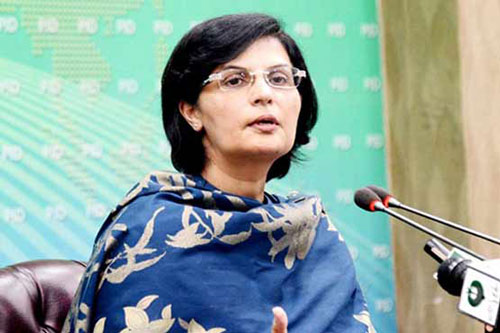Staff Reporter
Since the launch of Ehsaas as an umbrella programme on March 27, 2019 by the Prime Minister Imran Khan, many transformative initiatives and policy reforms have effectively been implemented nationwide. Some of the Ehsaas’ early wins across various sectors include: Kafaalat, Emergency Cash, Undergraduate Scholarship, Nashonuma, Langars, Interest Free Loans, Amdan and several others.
Looking back at 2020, Ehsaas touched the lives of half the country’s population amid the COVID-19 crises. Mitigating the pandemic’s socioeconomic damage, the government launched the Ehsaas Emergency Cash programme that has been widely acknowledged and showcased worldwide. Rolled out within ten days after lockdown began, it delivered one-time cash grants to 14.8 million deserving households (100 million people) with disbursements reaching Rs. 179 billion.
In 2020, Ehsaas Undergraduate Scholarships granted 50,762 need cum merit-based scholarships to undergraduate students from the low-income backgrounds; Ehsaas interest free loans supported more than 1 million borrowers (46% women) through loans worth Rs. 37 billion to run small entreprises, Ehsaas Amdan transferred small income-generating assets worth Rs. 2 billion to 34,812 deserving households to graduate them out of poverty and Ehsaas Nashonuma opened 29 centers in 8 districts of the country to tackle stunting among pregnant and lactating mothers, and children under 2 through a mix of conditional cash transfers and specialized nutritious food. By the end of Feb 2021, 19 more centers are opening in 6 districts.
Also contributing to the socio-economic mainstreaming of the poorest, the Ehsaas Kafaalat provided unconditional cash transfers along with saving bank accounts for millions of deserving households. As part of the recent enhancement through PM’s approval, the number of Kafaalat recipients has been increased from currently 4.6 to 7 million; a new Ehsaas Kafaalat for Special Persons Policy has also been announced bringing 2 million deserving families with a disabled person into the fold of Kafaalat. Consolidating high-end technology, widespread Ehsaas Kafaalat reforms have also been introduced to ensure integrity specifically payment through bank branches, device restrictions and many other transparency and safety protocols and measures.
To enroll deserving households in Ehsaas, the digitally enabled Ehsaas survey is ongoing in various districts across the country. The game changing survey is currently 56% complete in the field and is expected to be concluded before June 2021 nationwide. Once the survey nears completion in each district, Ehsaas registration desks are also opened at tehsil levels to facilitate self-registration of left out deserving households.
Among other initiatives, Waseela e Taleem Digital, an education conditional cash transfer programme has massively been reformed and upscaled through end-to-end digitization, cost effective changes in institutional infrastructure, new stipend policy and nationwide expansion to all districts. Also, under ‘Mazdoor ka Ehsaas, 16 Ehsaas Langars have been opened so far in all provinces and the federal capital through the public-private partnership feeding 600-1,000 daily wage earners everyday and work on the remaining has been fast-tracked. Furthermore, drawing on IT proficiencies, the living standards of all Panagahs in Islamabad have been restructured with enhanced infrastructure and standardized capacity for food catering and living.
By the end of 2020, the pilot rollout of the Ehsaas Tahafuz, Pakistan’s first shock-oriented precision safety net, has just commenced to protect the vulnerable against catastrophic health expenditures. Also, the soon-to-be-launched Ehsaas One Window initiative will assist beneficiaries through a single window solution and will avoid fragmentation. The first prototype physical centre will open in Islamabad by March 2021.










